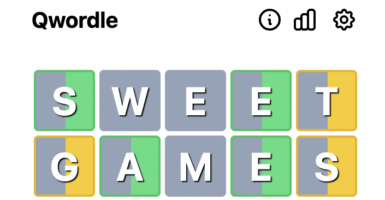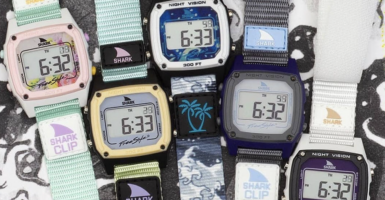[PHOTOS] Soldiers And Their Cats During World War I And World War II
“Military mascots” came in several shapes and sizes during World War I and II. Some units had dogs, horses, and camels, while others had cats. These brave felines joined soldiers on the front lines, providing much-needed comfort. In the trenches cats had the most important job, helping protect the food supply from mice and other animals. The most famous cat was Simon, who was even honored with a medal when he came home! Here are photos other cats with the soldiers who loved them!
These Cats Served On The HMS Vindictive
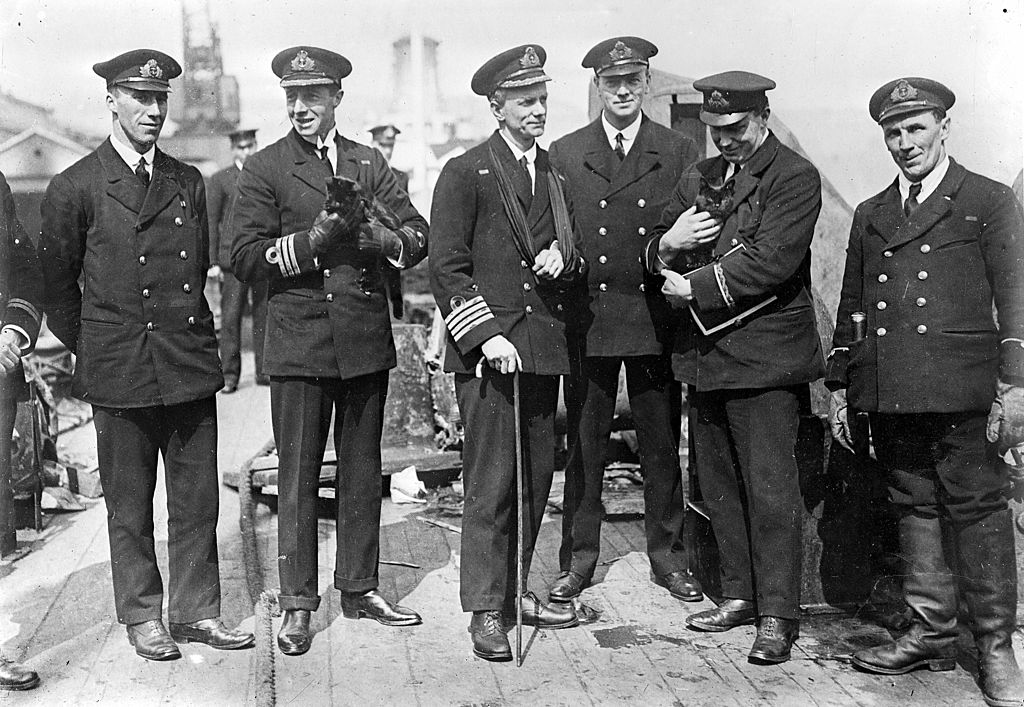
The HMS Vindictive was commissioned by the United Kingdom in 1918 and served until 1946, surviving through both World War I and II. This photo, which includes the ship’s two mascots, was taken during the first great war.
In World War I, the Vindictive participated in the raid on Zeebrugge, a mission that saw the Royal Navy work to prevent German ships from entering the port. The attack ended with 600 casualties.
Ready For First Flight!
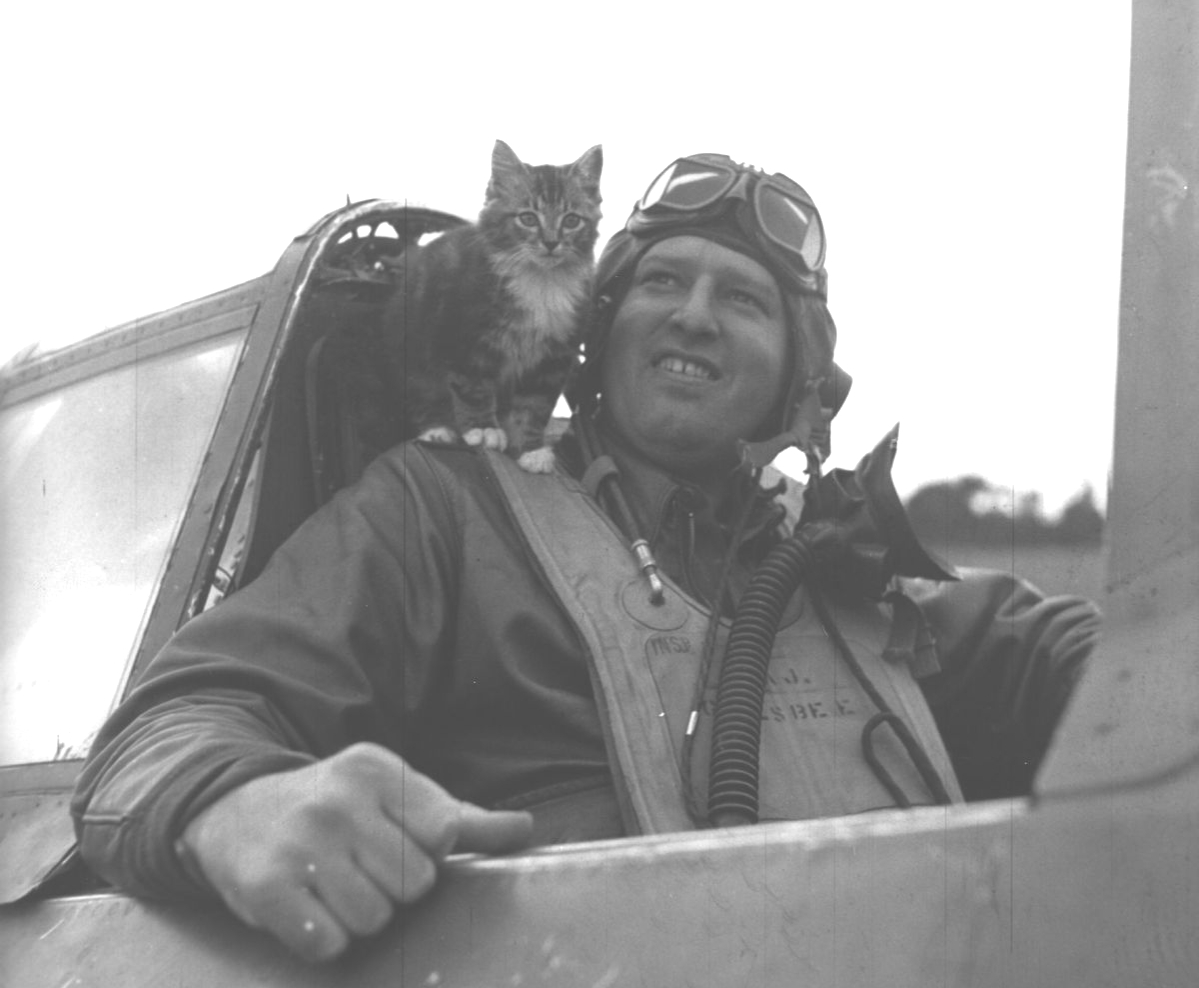
Taken near the end of World War II, this cat is showing support for a member of the Royal Airforce before a mission. The furry friend did not participate in the flight but was the mascot on the aircraft carrier.
After the war, cats remained a staple on ships for 30 years. In 1975, the Royal Navy banned the practice of having cats on ocean-bound ships for hygiene purposes (where this plane likely launched from).
Mascot In Training
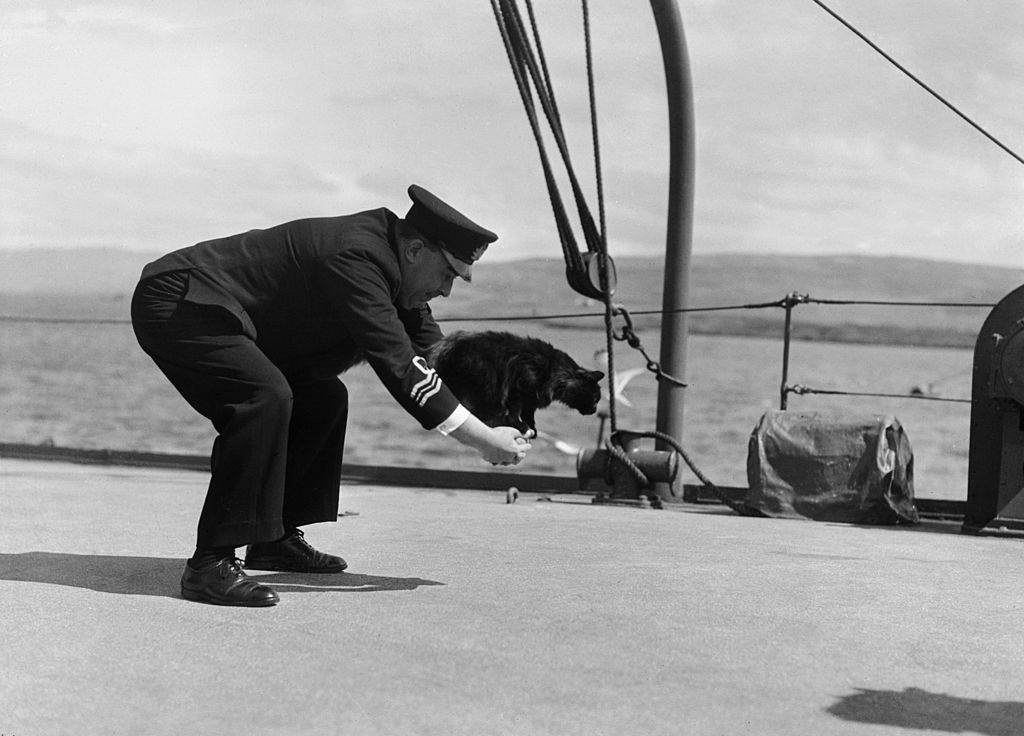
Pebbles served at Battle School for U-Boat Hunters in Scotland and was known as one of the smartest mascots in the Royal Navy. According to former soldiers, he would greet strangers by shaking their hands and loved jumping through loops.
While aboard the HMS Western Isles, Pebbles made friends with Lieutenant Commander R.H. Palmer. The two loved playing together and had a beautiful bond that went beyond just shipmates.
Pincher Proudly Served On The HMS Exeter
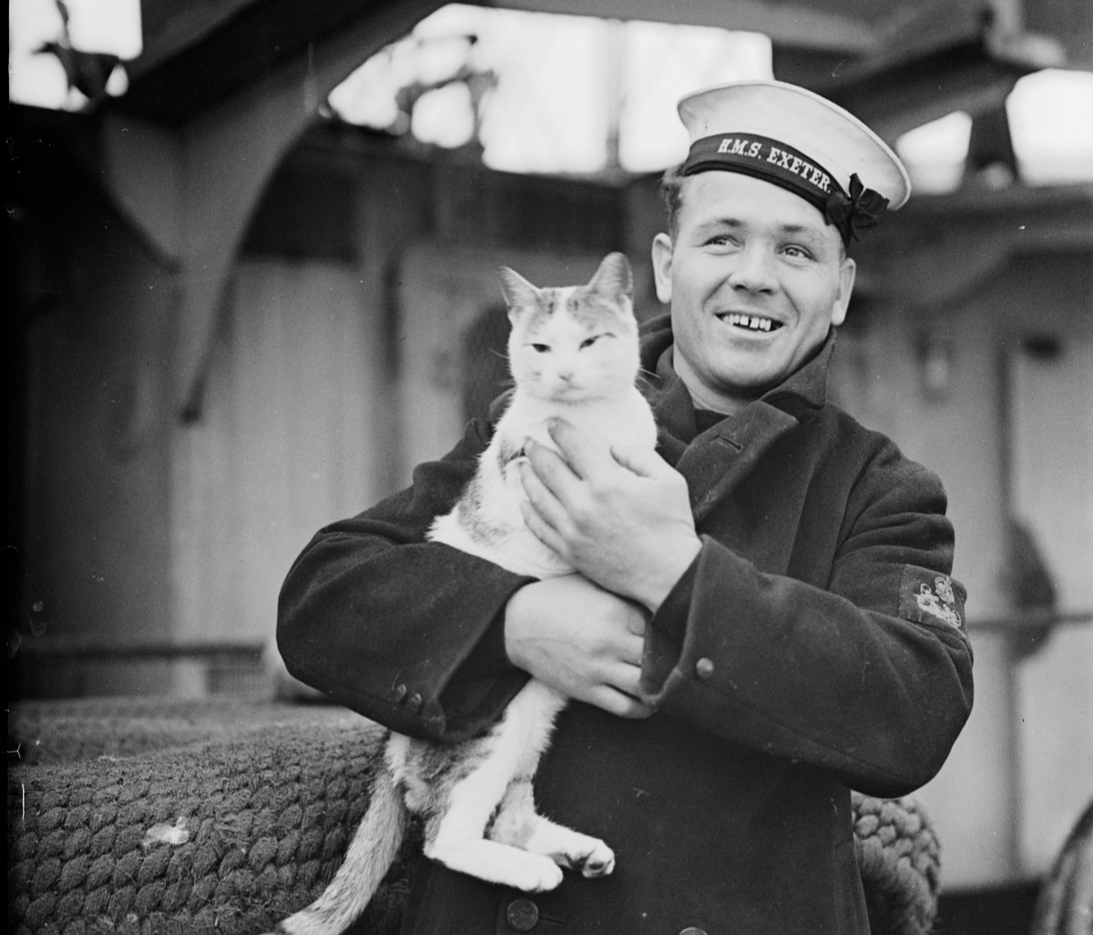
This photo, taken on February 15, 1940, shows Pincher, the mascot cat who served aboard the HMS Exeter during World War II. The ship was part of the fleet that sunk Graf Spee, a German battleship. The picture appeared in the Daily Herald Newspaper.
When the crew returned to port, they were met by Winston Churchill, who was overjoyed to greet Pincher. At the time, Churchill was Britain’s First Lord of The Admiralty.
The Auxiliary Territorial Service Mascot Cat
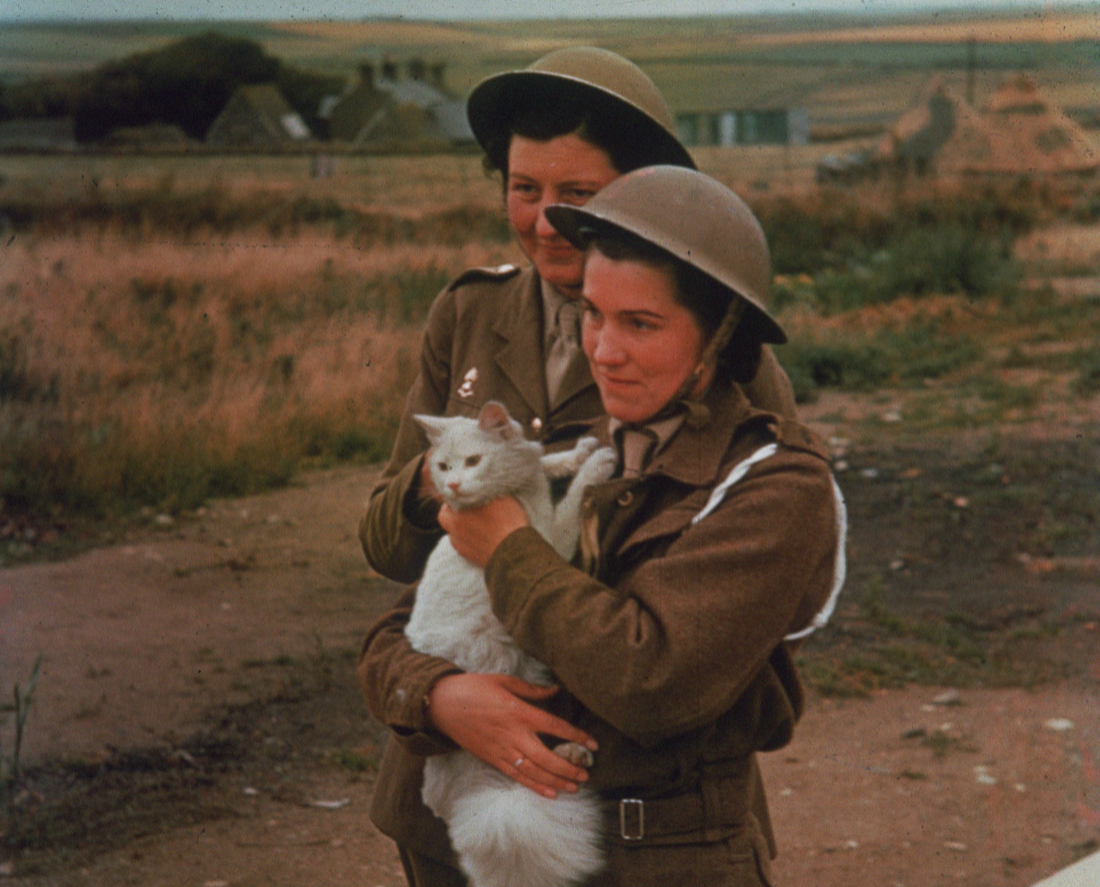
In 1938, the British Army formed the Auxiliary Territorial Service (ATS), which was the country’s women’s branch. Just like other branches of the army, the ATS was given mascot cats to help with food protection and morale.
This 1941 photograph shows an ATS mascot cat at an anti-aircraft gun site in California. It’s also one of the only photos we have in color, showing just how amazing this feline’s fur is.
Convoy Gets All The Benefits Of His Human Counterparts
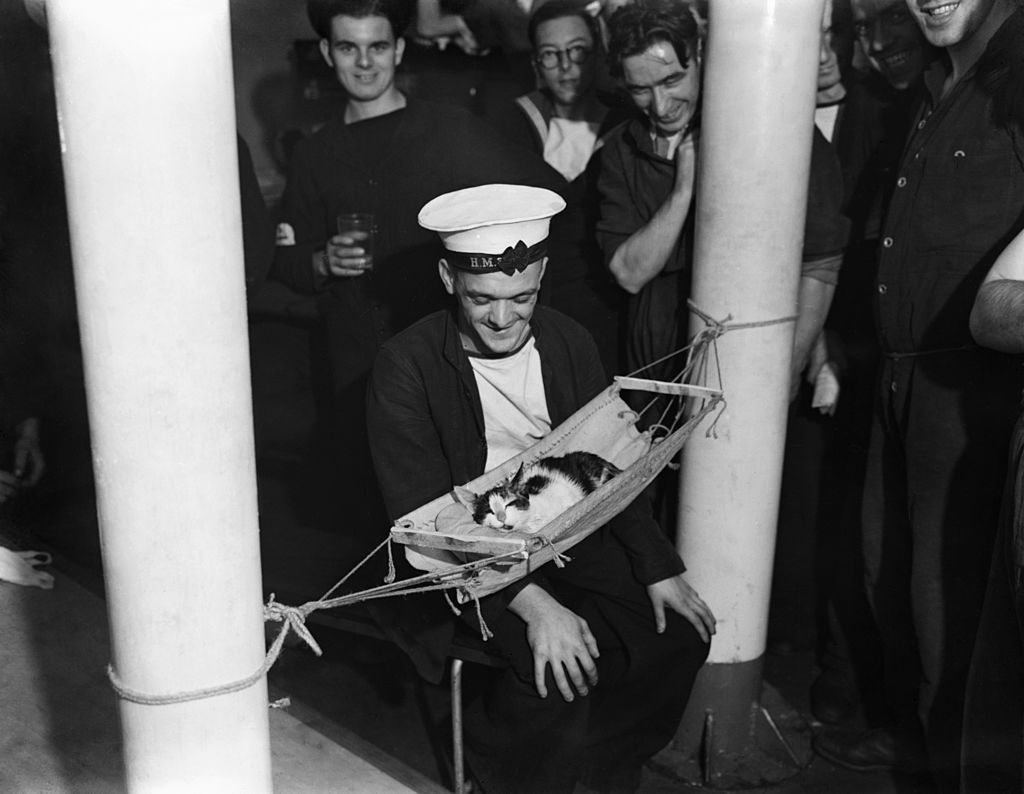
Convoy was so beloved by his army mates that he was afforded all the luxuries a human was. That meant he was kept in the ship’s book and had a full kit.
While serving on the HMS Hermione, he was given the name Convoy because of how often he joined in for duty patrols. Convoy became an indispensable part of the crew, and, as you can see, was given special treatment for his unique personality.
Tiddles Was A Navy Lifer

Tiddles was the captain’s cat on the HMS Victorious and lived a spoiled life in the navy. Here he is on his favorite station, posing for just a second before playing with his favorite bell-rope.
Life at sea was all Tiddles ever knew. He was born on the HMS Argus before switching ships to the HMS Victorious, where the captain took a liking to him. It was here he served during World War II, ensuring that no rat came near the crew’s food supply.
A Meeting Of Brilliant Minds
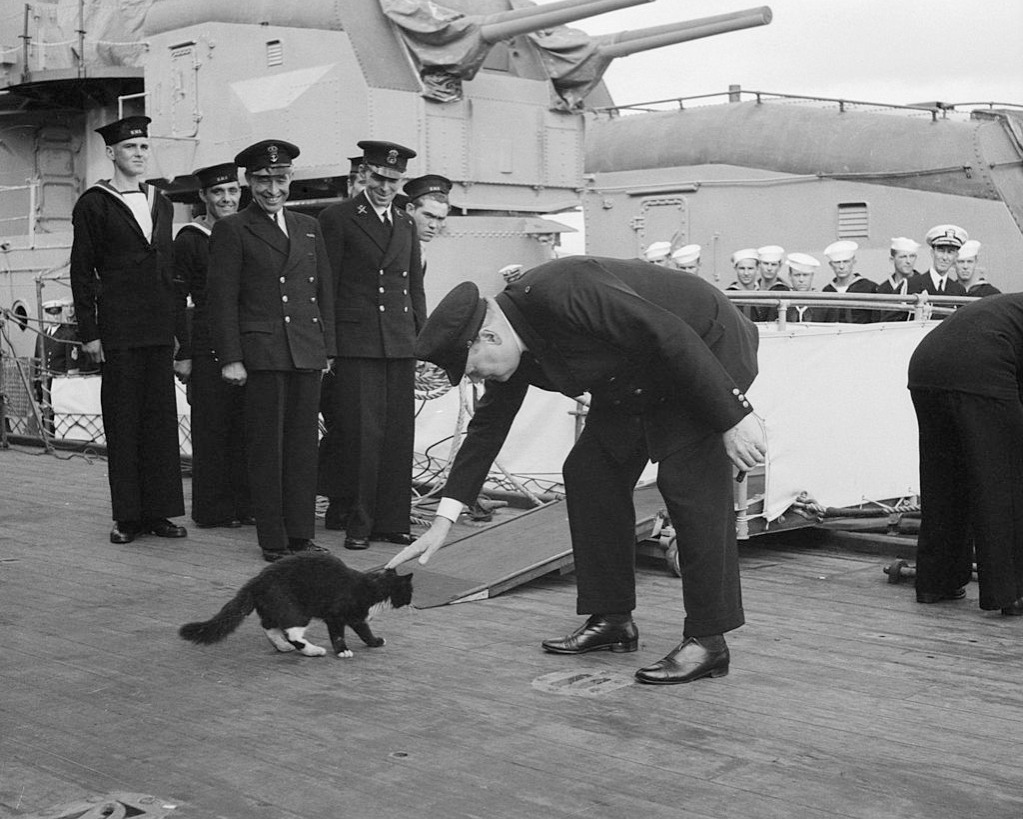
The love of cats during World War I and II went far beyond the soldiers. This amazing picture of Winston Churchill greeting Blackie, the mascot of the HMS Prince of Wales, is proof of that.
Churchill met the cat in 1941 at the Atlantic Conference. Blackie was on his way to climb aboard an American destroyer while the National Anthem was playing when the British Prime Minister intervened. The soldiers in the back could hardly keep their composure.

